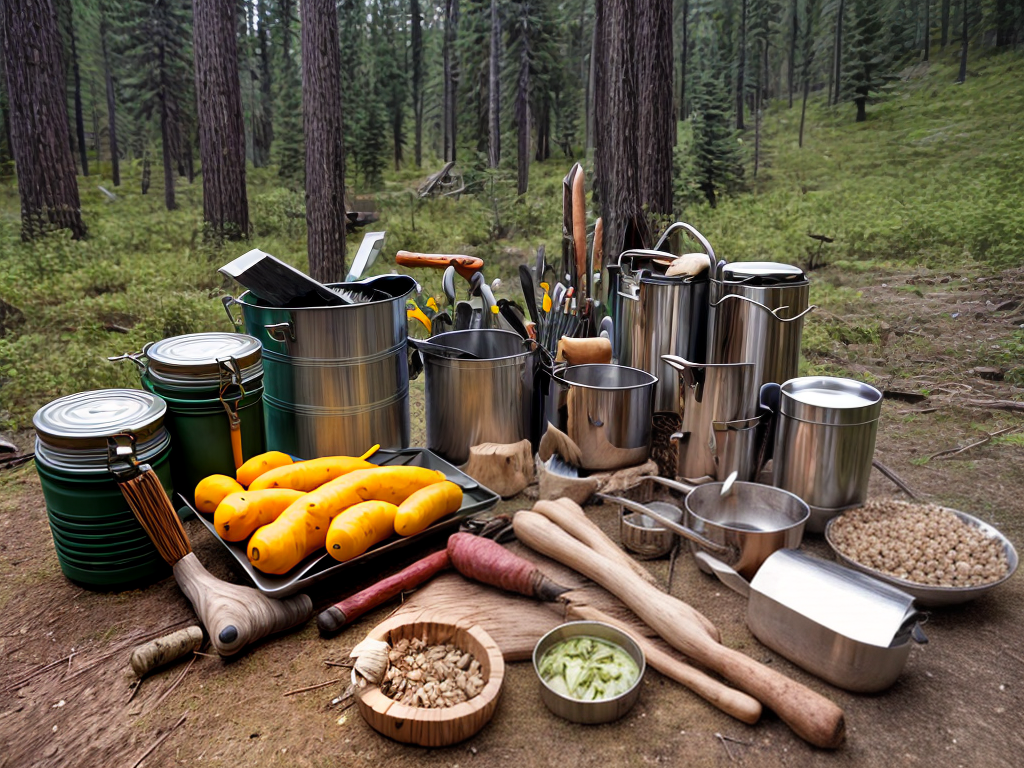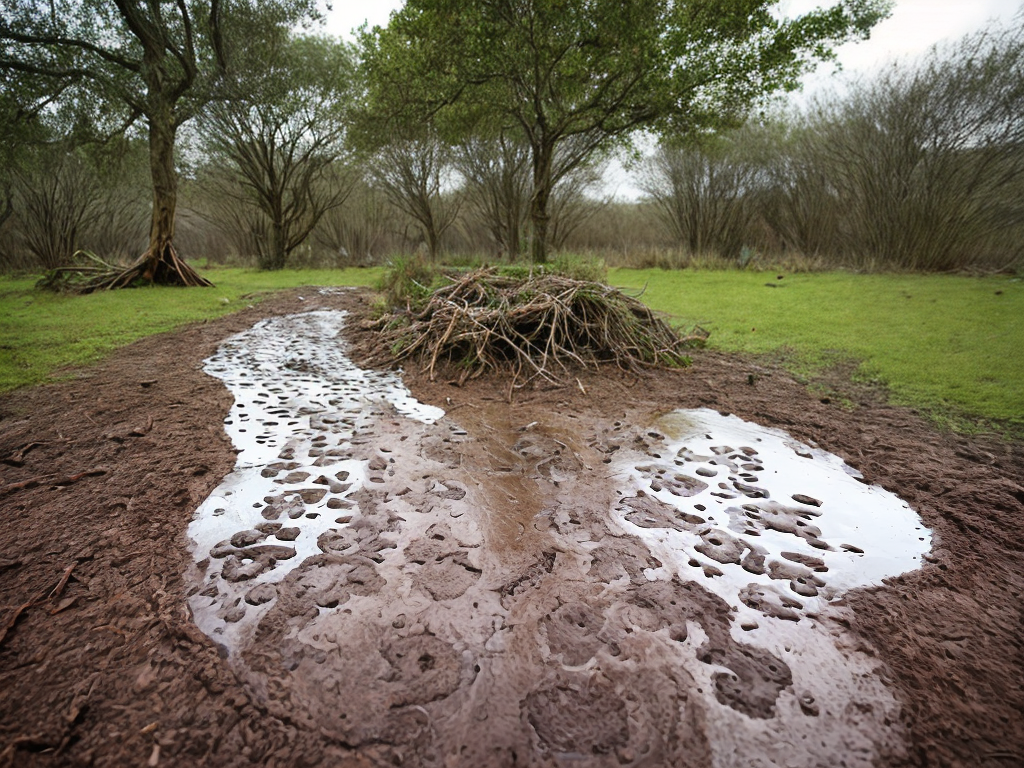
Are you ready to embark on an extraordinary journey into the world of ancient techniques and methods that our ancestors relied upon to thrive in the wilderness? In this comprehensive guide, we will explore various aspects of bushcraft by focusing on practical techniques and principles that enable you to survive and thrive in nature. From starting a fire using primitive tools to building a shelter with natural materials, mastering these survival crafts equips you with crucial skills for the great outdoors.
Whether you are an outdoor enthusiast, an adventurous soul in the wilderness, or simply seeking a reconnection with nature, this guide is the perfect resource to enhance your skills.
Click here to learn more Survival Tips from Pro Outdoor Survival
Essential Survival Skills
In the realm of wilderness survival, understanding and mastering fundamental skills for living in the wild are crucial. These abilities not only help people to endure in difficult and unpredictable environments but also empower them to thrive.
From the techniques of bushcraft to the precision of hunting and constructing shelters using traditional methods, these foundational skills are essential for surviving in the great outdoors.
By refining these outdoor skills, one becomes a true expert in wilderness crafts, capable of adapting to any situation and relying on natural resources for fire making and other necessary tasks.
So join us on this extraordinary journey as we uncover the secrets of vital survival skills and discover the true power of human resourcefulness.

Traditional Crafts for Wilderness Survival
Traditional crafts play a vital role in wilderness survival, and they are crucial for any business or brand looking to thrive in the great outdoors. Bushcraft, in particular, is all about understanding and utilizing the natural resources around us.
From identifying edible plants and mushrooms to building shelter using materials found in the wilderness, these skills are essential for self-reliance.
By embracing the principles of bushcraft, we can deepen our connection to nature and rely on our own abilities to survive and thrive in the wilderness.
So, whether you are a professional adventurer or an outdoor enthusiast, traditional crafts for wilderness survival are definitely worth exploring.
| Traditional Crafts | Benefits |
|---|---|
| Bushcraft | Understanding and utilizing natural resources |
| Identifying edible plants and mushrooms | Essential for self-reliance |
| Building shelter with wilderness materials | Deepens connection to nature |
Mastering Bushcraft Techniques
In the world of survival skills, mastering traditional navigation techniques is a skill that can truly set you apart. While GPS devices and smartphones have become popular tools for outdoor navigation, relying on ancient methods can offer a deeper connection to the wilderness.
From reading the stars to interpreting nature’s signs, traditional navigation allows you to find your way with precision and confidence.
Alongside the art of traditional navigation, another crucial aspect of mastering bushcraft is the practice of primitive woodworking.
By honing your skills in wilderness woodworking, you can create tools, implements, and even shelters using only natural materials. This age-old craft combines practicality with a deep appreciation for the resources provided by nature.
And as you explore the world of bushcraft, you’ll discover the art of primitive fishing, a technique that predates modern angling methods. By using traditional fishing techniques such as hand lines, nets, and outdoor navigation, our ancestors were able to sustain themselves in the wild.
Art of Primitive Hunting and Wilderness Navigation
The Art of Primitive Hunting and Wilderness Navigation encompasses a wide array of techniques and strategies utilized by early humans to thrive in the wild. In terms of hunting, our ancestors employed various methods to capture their prey, which involved tracking, trapping, and the use of basic weapons like spears or bows and arrows.
The inventiveness and resourcefulness shown by early humans in developing these skills highlight their unwavering determination to ensure survival.
When it comes to navigating through the wilderness, our ancestors relied on observational skills and a comprehension of natural landmarks to find their way through dense forests, expensive deserts, and hazardous mountains.
Without the assistance of modern technology, they acquired the ability to interpret celestial bodies like the sun and stars to determine direction. Observation and instinct played crucial roles in the success of primitive hunting and navigation, enabling early humans to adapt to their surroundings and conquer obstacles.
Tools for Primitive Shelter Building
Having the appropriate equipment is crucial for constructing traditional shelters in the wilderness. In these circumstances, modern tools might not be accessible, which is why understanding how to utilize survival skills is vital.
let’s delve into the realm of primitive knot tying and bow making, abilities that were perfected by our predecessors for constructing outdoor shelters.
These methods not only enabled them to build resilient shelters but also demonstrated their cleverness and resourcefulness in utilizing natural resources.
So, let’s discover the art of primitive knot tying and bow making for effective and efficient shelter construction in the wild.
Exploring Wilderness Through Primitive Woodworking
In the wilderness, the art of primitive woodworking offers a captivating and immersive experience. By honing our woodworking skills, we can tap into the wisdom of those who came before us, connecting us to our roots and fostering a deeper appreciation for handmade objects.
With just basic tools and our own ingenuity, we embark on a journey that allows us to forge a profound connection with nature.
Through the process of shaping wood with our bare hands, we not only unlock endless possibilities but also create functional and exquisite objects that narrate our personal stories.
In the untamed wilderness, where resources are scarce, the craft of primitive woodworking equips us with the knowledge to adapt and thrive. From crafting tools and utensils to building shelters, woodworking in the wild becomes a testament to our resourcefulness and self-sufficiency.
Primitive Woodworking
- Primitive woodworking connects us to our ancestral heritage and traditions.
- Woodworking in the wilderness promotes self-reliance and resourcefulness.
- Through primitive woodworking, we learn to appreciate the value of handmade objects.
- The craft of primitive woodworking allows us to adapt and thrive in environments with limited resources.
Art of Primitive Fishing and Outdoor Foraging
The art of survival in the wilderness and outdoor foraging has fascinated adventurers throughout history. Drawing from generations of wisdom, individual’s have depended on their ingenuity and understanding of nature to sustain themselves.
From homemade fishing spears to skillfully woven nets, primitive fishing exemplifies the resourcefulness and adaptability of our ancestors.
On the flip side, outdoor foraging involves the art of identifying edible plants, mushrooms, and other natural resources in the wild.
By embracing and comprehending the environment and its bounties, we can establish a profound connection with nature.
Traditional Trapping Methods
Traditional trapping methods have a long history, dating back to indigenous communities and early settlers. These methods were primarily used for acquiring food, capturing fur, and managing pests.
The success of traditional trapping methods relies heavily on the trappers knowledge of animal behavior and habitat, as well as their ability to work with minimal equipment.
One common technique is the deadfall trap, which involves setting up a heavy object that descends and crushes the animal when activated.
Another method is the snare trap, where a looped wire or cord is used to ensnare the animal by its neck or leg. Pit traps are also widely utilized, where a concealed hole is dug to trap unsuspecting animals.
To effectively use traditional trapping methods, trappers must possess resilience, expertise, and a deep understanding of animal behavior. They need to be able to recognize animal tracks, signs, and pathways. By utilizing these traditional trapping methods, trappers can continue to acquire sustenance, manage pests, and respect the primitive tracking techniques that have been passed down through generations.
Traditional Trapping Methods
- Traditional trapping methods have a long history, dating back to indigenous communities and early settlers.
- These methods were primarily used for acquiring food, capturing fur, and managing pests.
- The success of traditional trapping methods relies heavily on the trappers knowledge of animal behavior and habitat.
- To effectively use traditional trapping methods, trappers must possess resilience, expertise, and a deep understanding of animal behavior.
Surviving Panic Psychology Strategies
Foraging Wild Edible Medicinal Plants

























